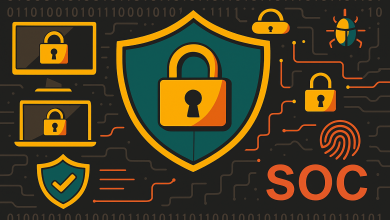
With over half of the consumers now saying that mobile apps are the preferred way to make purchases, mobile app security is moving to centre stage – not only for mobile brands but also for consumers themselves.
In fact, mobile app protection is pivotal, according to Appdome’s recently released UK Consumer Security Survey. The research reveals that mobile app security is at least as important as new features, while a quarter feel mobile app security is actually more important than features. Consumers are increasingly using their phones for just about every aspect of their daily work and personal lives, and the nature of the data handled by mobile applications has grown increasingly mission-critical and sensitive.
British Consumers’ App Security Expectations
Mobile user awareness about the ever-expanding threat landscape has greatly advanced since the first apps were released. And now, the average consumer is far more aware of the potential dangers that come with mobile app usage. British consumers demand the highest level of protection against security threats, hacking, fraud, and malware.
With so many apps available, vendors must compete for consumers’ attention. So, it’s clear companies should prioritise the security of user data, ensuring anyone who downloads their products knows their data is secure. And for businesses, the rewards far outweigh the risks. British will overwhelmingly reward and promote brands that protect their mobile data and abandon brands they perceive as not protecting mobile apps.
In this digital era, word-of-mouth is still a powerful tool. Many consumers will tell friends to stop using an app if they discovered it did not protect their data – even going so far as to abandon an entire brand because of a breach or reported hack. Conversely, consumers who believe an app meets their security expectations are more likely to publicly hashtag or share it on social media, or even recommend it privately to friends and family.
How to Keep Mobile Apps Secure
With security top of mind for British consumers, this only underscores its significance for mobile brands. So how can mobile brands ensure their consumers not only have the security they are looking for but are also aware that security protections are in place?
Implementing the needed security measures to meet consumers’ needs is challenging for mobile brands. Today’s cyber-security teams are simply outmatched by hackers and cyber-criminals who have continued to up their game and deliver the most sophisticated and realistic looking of attacks using automation, malicious bots, trojans, and malware to do most of the dirty work for them.
Modern cyber-criminals hack at scale, automate attack execution, and chain together attacks using an ever-increasing arsenal of freely available/open-source as well as commercial-grade hacking tools and frameworks such as Bluestacks, Frida, Magisk, and many more. These tools allow attackers to understand how apps work from the inside out, as well as to dynamically instrument and alter app behaviour during runtime, producing attacks so sophisticated that even trained security pros cannot tell the difference between malware and the actual app.
Faced with these realities, the only way to build an effective cyber defence for mobile applications is by using automation, including machine learning and artificial intelligence technologies which can only be found in a cyber defence automation platform.
In addition, using rapid no-code technologies inside a platform that can automate mobile app security implementations, as well as act as a “system of record” to track, audit, and version control the security model, are core requirements that must be delivered within mobile brands’ toolchains and workflows to build, test, deliver and update mobile apps inside the CI/CD development pipeline. In other words, automation of mobile app defence is the only way to ensure that developers can build the required protections into Android and iOS apps which meet consumers’ expectations of security, anti-fraud, and malware prevention in the apps they use.
This is an ongoing process and virtually impossible to do without the use of AI (Artificial Intelligence) in mobile development. In addition, by constantly monitoring real-time attacks and threats using a mobile XDR solution, developers can understand how to move their protective features forward, with each new app release.
Mobile security doesn’t end with the implementation of the app. The final step is communicating that protection mechanisms have been put in place to the consumer – via release notes, app store description, email or push notification mechanisms to give British citizens the assurance that their app experience is safe.
The survey data shows the importance of mobile brands needing to protect their mobile end users with what consumers want. And what consumers want more than anything else is to be protected from cheat, fraud, malware and other potential threats.
By keeping security measures up to date, as well as ensuring that their consumers are aware their data is secure, businesses can build allegiance to their brand and help ensure their own piece of the app market. And AI and ML automated threat intelligence systems give cyber defence teams a closed-loop automated system by which to ensure proper mobile app protection of their apps, users and data.




